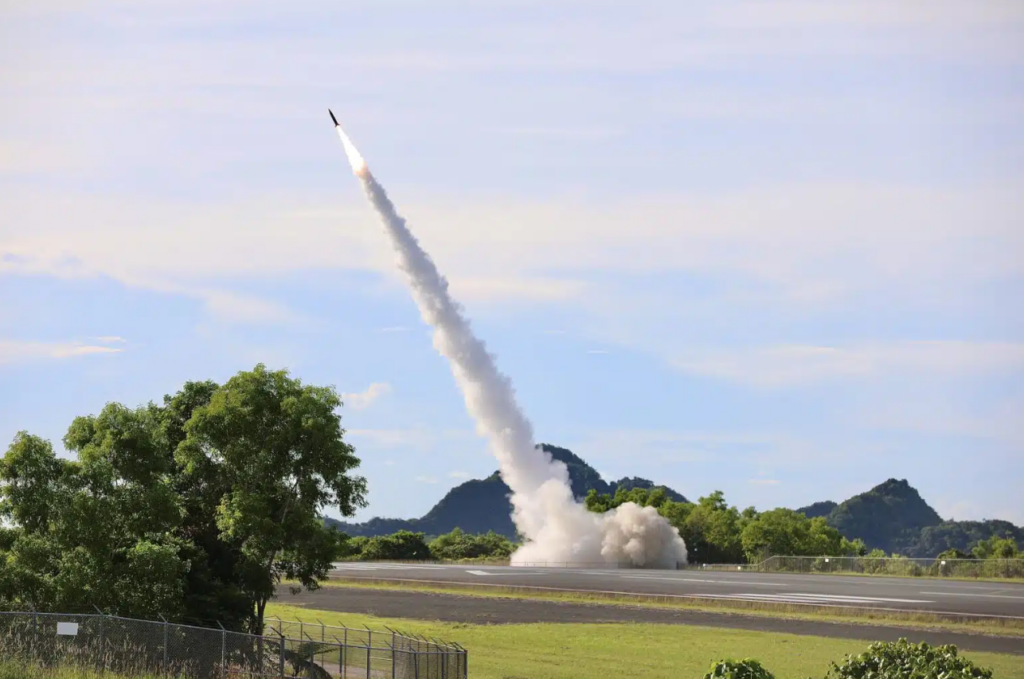Lockheed Martin’s Precision Strike Missile (PrSM) Advances Toward Production After Successful Qualification Tests
The U.S. Army’s Precision Strike Missile (PrSM) has achieved a major milestone through completion of its Production Qualification Tests (PQT) at White Sands Missile Range, clearing the way for full-rate production. The Lockheed Martin-developed next-generation surface-to-surface missile is part of the Army Long-Range Precision Fires modernization program.
PrSM is planned to replace ATACMS and significantly increase the U.S. Army’s land precision strike range. Unlike the older ATACMS (which uses one missile per MLRS pod and has a range of roughly 300km), the baseline PrSM (Increment 1) carries two missiles per HIMARS or M270 launch pod and flies well beyond 400km. Army officials note that this effectively doubles both the loadout and range of legacy systems, improving standoff and survivability in future conflicts. As Maj. Gen. Frank Lozano, PEO Missiles and Space, observed, “PrSM will give our Soldiers a game-changing capability on the battlefield, allowing them to engage targets at long range with precision and lethality”.

The recent PQT campaign consisted of a series of flight tests validating production-standard missiles under realistic conditions. In one such test (on February 12), the Army launched two PrSM Increment 1 missiles from a HIMARS vehicle. Both missiles flew their predicted trajectories and struck all designated targets, including a simulated SCUD missile, a radar site, and a rotary-wing aircraft while meeting performance metrics for range, accuracy, flight time, and height of burst. These successful firings followed earlier trials (including a November 2024 flight and the first soldier-led PrSM launch in December 2024). Additional launches on April 24, 2025, further confirmed the system’s reliability: the tests “confirmed the missile’s performance across key criteria, including range, reliability, and precision”.
PrSM incorporates several technical advances over its predecessor. Its rocket motor and guidance system allow it to strike targets well past 400km. The missile carries a unitary high-explosive warhead and uses GPS/INS guidance to deliver precision strikes. It is designed with an open-systems, modular architecture that eases future upgrades; later variants (Increment 2 and beyond) will add multi-mode seekers for moving or maritime targets and extend range toward 500+ km. Crucially, PrSM can be launched from existing HIMARS and M270A2 launchers, doubling each launcher’s firepower. The combination of increased loadout and standoff range translates into significantly greater lethality and flexibility for long-range fires, while maintaining compatibility with current artillery units.
Successful completion of PQTs has significant implications for U.S. military readiness and procurement strategies. Initial Operational Testing and Evaluation (IOT&E) is scheduled for May 2025, after which the Army plans a decision on full-rate production by late 2025. With production design having been verified through current tests, Lockheed Martin is stepping up production: a recent $120 million contract boosts capacity to around 400 missiles a year. Once full-rate production is approved, PrSM rounds will flow to combat brigades, significantly enhancing joint and Army strike assets. Future planned PrSM increments, including longer-range and anti-ship variants, will further expand the Army’s multi-domain precision strike toolbox.

